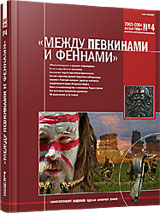Археологические критерии социальной истории Янтарного берега в I–XI вв. н.э.
Archeologic Criteria of a Social History of Amber Coast in I – XI centuries AD
Author(s): Vladimir Ivanovich KulakovSubject(s): History, Archaeology, Ancient World, Middle Ages, 6th to 12th Centuries
Published by: Издательский дом Stratum, Университет «Высшая антропологическая школа»
Summary/Abstract: The monograph is the first scientific attempt to analyze the funeral material of the Amber coast (historical Prussia) with reference to reconstruction of palaeosocial norms in this part of Europe on extent of the 1st millennium A.D. The social structure and trends in development of societies in the lands of the Aestii and Prussians can be presented as follows:1. According to funeral sites of phase B2/C1, Sambia and adjoining territories were almost completely abandoned by the autochthonic West-Baltic population, which had receded to the east pressed by the newcomers, whom the antique written records unite under the general name of «Venedi». Among them, there might have been carriers of Wielbark cultures (the Lubowidz-phases), i.e. the East Germans, and newcomers from the Danube basin, i.e. Celto-Romanians. Stably enough preserved West-Baltic tribal communities are fixed only in headwaters of the Pregel river. The allochthonians on the Amber coast undoubtedly made a certain social collective, the predominating role in which was played by international soldiers. It is possible that the originally German ethnic name of «Aestii» could incorporate both «Venedi» and the remaining autochthonous Balts in southeast Baltic. This ethno-culturally complex community had an equally complex social structure.2. The beginning of deformation of tribal relations in the society of Aestii-Balts, who reappeared in masses on the Amber coast as a result of the «West-Baltic Reconquista» in the middle of 5th c. A.D., coincides with and, obviously, leads to emergence of the Prussian culture. This process was stirred by an active dialogue of the Aestii and Vidiwarii.3. Having in effect non-conventional for the tribal system foundations, the material culture of the Prussians is military in nature. However, since the turn of 7th-8th centuries, the ruling functions in the land of the Prussians were taken over by the priests who appropriated the victory of the military Prussians over the Masurians.4. Aspiration of the Scandinavian Vikings in early 9th c. to supervise amber trade beginning directly from its source – Sambia – led to unexpected results.6. In early 12th century traces of military antiquities in Prussian archaeology practically disappear. The reason to that might be a conflict between professional warriors and priests regarding distribution of tribute and authority.
Journal: Stratum plus. Археология и культурная антропология
- Issue Year: 2004
- Issue No: 4
- Page Range: 278-382
- Page Count: 105
- Language: Russian
- Content File-PDF

